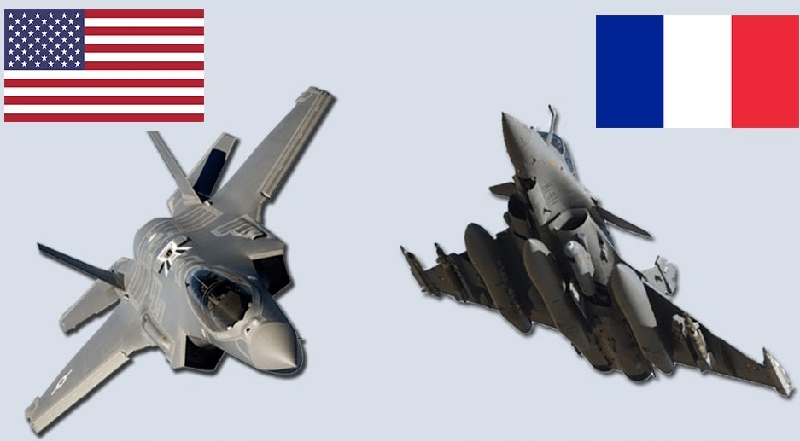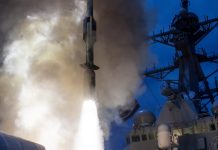With the ongoing feud with Saudi Arabia leading to a ban of Turkish products within the country and his tiff with French president Emmanuel Macron, it would be safe to say that Turkish President Recep Tayyip Erdoğan has had better days at the office.
Walk Of Shame: Another US Navy Warship Breaks-Down, Heads Back Home Crawling & Growling: WATCH
While already battling fellow NATO member and arch-rival Greece in the eastern Mediterranean over the control of oil and gas reserves along with the maritime rights, Turkey has found itself being constantly battered by the United States for going ahead with the deal to procure the S-400 missile defence systems from Russia.
And to make things from bad to worse for Turkey, Washington has reportedly decided to now aid Greece in their fight against the nation by equipping it with fifth-generation F-35 stealth fighters which had originally been built for Ankara, before they were ousted out of the F-35 Joint Strike Fighter Program.
Once implemented, Greece, which has already clinched the deal with France to acquire 18 Dassault Rafales to strengthen their air fleet against Turkish threat, would see its Hellenic Air Force (HAF) be revamped with 20 Lockheed Martin F-35 Lightning II joint strike fighters, which are considered the most advanced fighters on the planet.
As things stand, the Hellenic Air Force will soon be equipped with a total of 18 Rafales, out of which six will be newly built and the other 12 will be second-hand examples diverted from the French Air Force stocks.
One can only wonder how the stealth fighters could line up alongside the 4.5 generation French Rafales and what would a combined duo of these fighters bring to the Hellenic Air Force.
There is a reason why the F-35 is the most sought after fighter on the planet, with nations like the United Arab Emirates (UAE) even ending decades of animosity with Israel in a bid to move forward in acquiring the stealthy fighter jets.
The fighters with the use of their advanced stealth with fighter speed and agility, fully fused sensor information, network-enabled operations, and advanced sustainment, will provide Greece with an aerial superiority they would have never experienced before.
While the F-35 is a single-seat, single-engine, all-weather stealth multirole fighters capable of performing ground attacks and air defence missions, the Rafale is a twin-Engine, Canard Delta wing, Multirole fighter aircraft which will provide Athens with the option to carry a wide range of potent short and long-range missiles.
With the Hellenic and Turkish Air Forces regularly sparring over the Aegean Sea, Greece can have the power of deploying the team of F-35s and Rafales to carry out ground as well as sea attacks along with reconnaissance and high accuracy attacks on Turkish bases.
Moreover, an area where the F-35s can help Rafales is taking down Turkey’s impressive defence systems. As and when the S-400s are successfully set up, the F-35s are the only fighters possessing the ability to take them down. According to a Greek Military source, speaking to the Greek City Times,
“It gives any air force the ability to penetrate deep in enemy territory and takedown radar and antiaircraft installations like the S-400. As the eastern Mediterranean is a large area, the F-35 advanced electronic suite, radar, and sensors, in combination with its small radar control system, gives the F-35 air superiority against their adversaries.”
Currently, the HAF boasts a combination of multi-role fighters in its ranks including the F-16 Fighting Falcons, Mirage 2000s, and F-4 Phantom IIs.

The HAF is spearheaded by a total of 153 Lockheed Martin F-16 Vipers to Turkey’s 245, which have completed three decades of service in both nations. The fighters were acquired long back as a means to replace the ageing F-104 Starfighters and F-5 Freedom Fighters.
The bulk of these fighters are allocated in eight operation squadrons based at Araxos, Lárisa, Néa Anghialos, and Souda-Chania, with all squadrons maintaining full air-to-air capability in a bid to counter Ankara’s airspace violations.
Apart from that, Athens operates around 42 Mirage 2000 multi-role fighters after acquiring two distinct versions of the delta-wing jet. While the fighters have primarily been used for air defence, they can be armed with AM.39 Exocet anti-ship missiles.
The HAF also has a single unit operating around 36 F-4E fighters which have been upgraded to Peace Icarus 2000 standard under the Avionics Upgrade Program (AUP). However, out of the 36 fighters, 33 remain operational with around 20 available for operations when needed.
The combination of Rafales and the F-35s will add another dimension to their attack with both sets of fighters being nuclear-capable, even though both Greece and Turkey do not possess nuclear weapons.
While both fighters use the same AAM and AGM missiles, with their radars also being of similar quality, an area where the F-35s are absolutely unbeatable is their stealth technology which can enable them to penetrate deep into Turkish airspace while the Rafales can shoot-down aerial threats with their BVR missiles.
While the Rafales have moderate stealth capabilities, they are unmatchable to that of the F-35s or the even stealthier F-22 Raptor. The fighters possess lower cross-section radar along with a futuristic aerodynamic design which enables them to evade enemies and attack without alerting them.
Moreover, while the F-35s are nimble and faster fighter planes, the Rafales are comparatively sturdier and more agile with a better thrust to weight ratio along with a bigger weapons load.
According to military sources – while the Rafales could annihilate Turkish fighter jets including all of F-16s, the F-35s could accompany other Greek fighters in carving open Ankara’s defence.
“The other mission that the F-35 is designed to do well is deep penetration within the surface to air missile (SAM) protected areas. The scenario is like this: an F-35 flies undetected deep inside enemy territory and disables the radars of the SAM sites. Thus, opening a corridor for the Rafale jets to enter through and create havoc.





